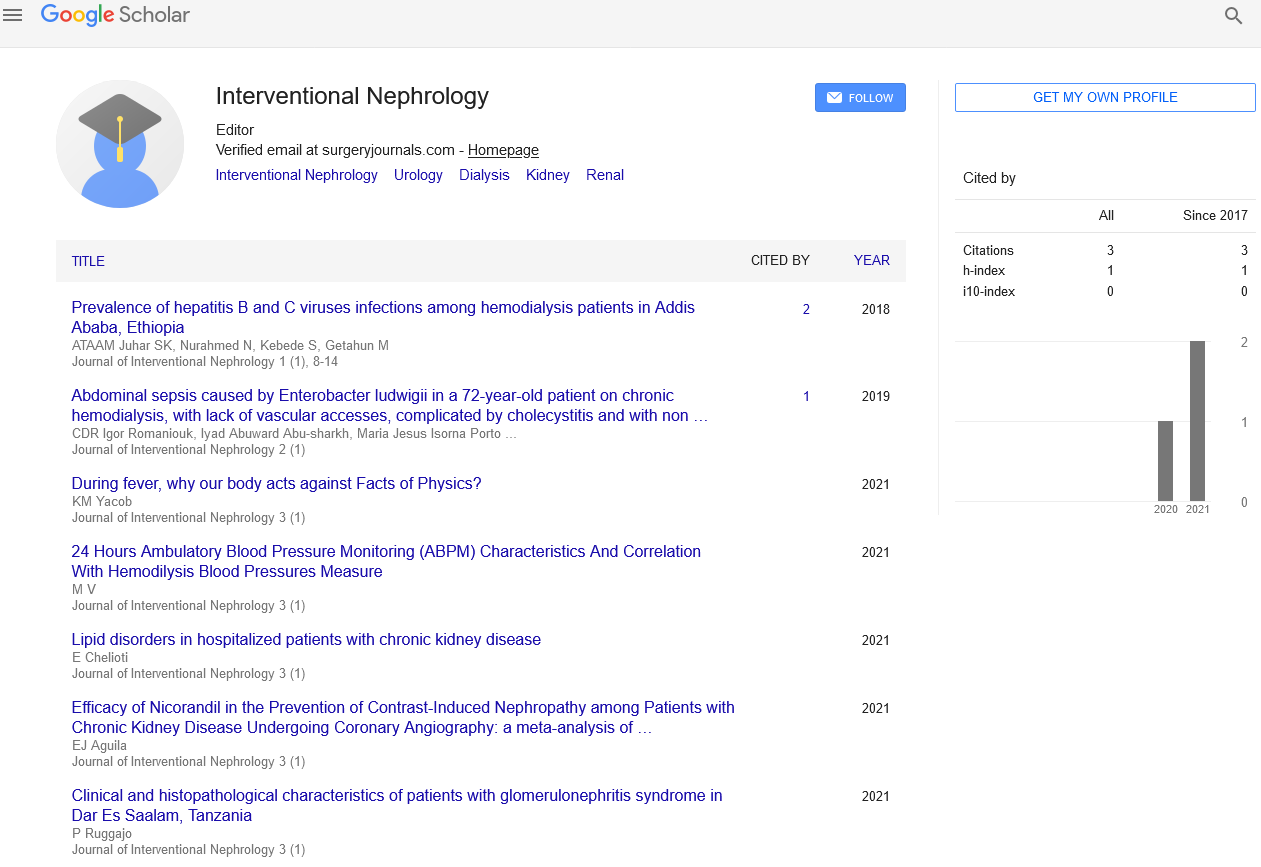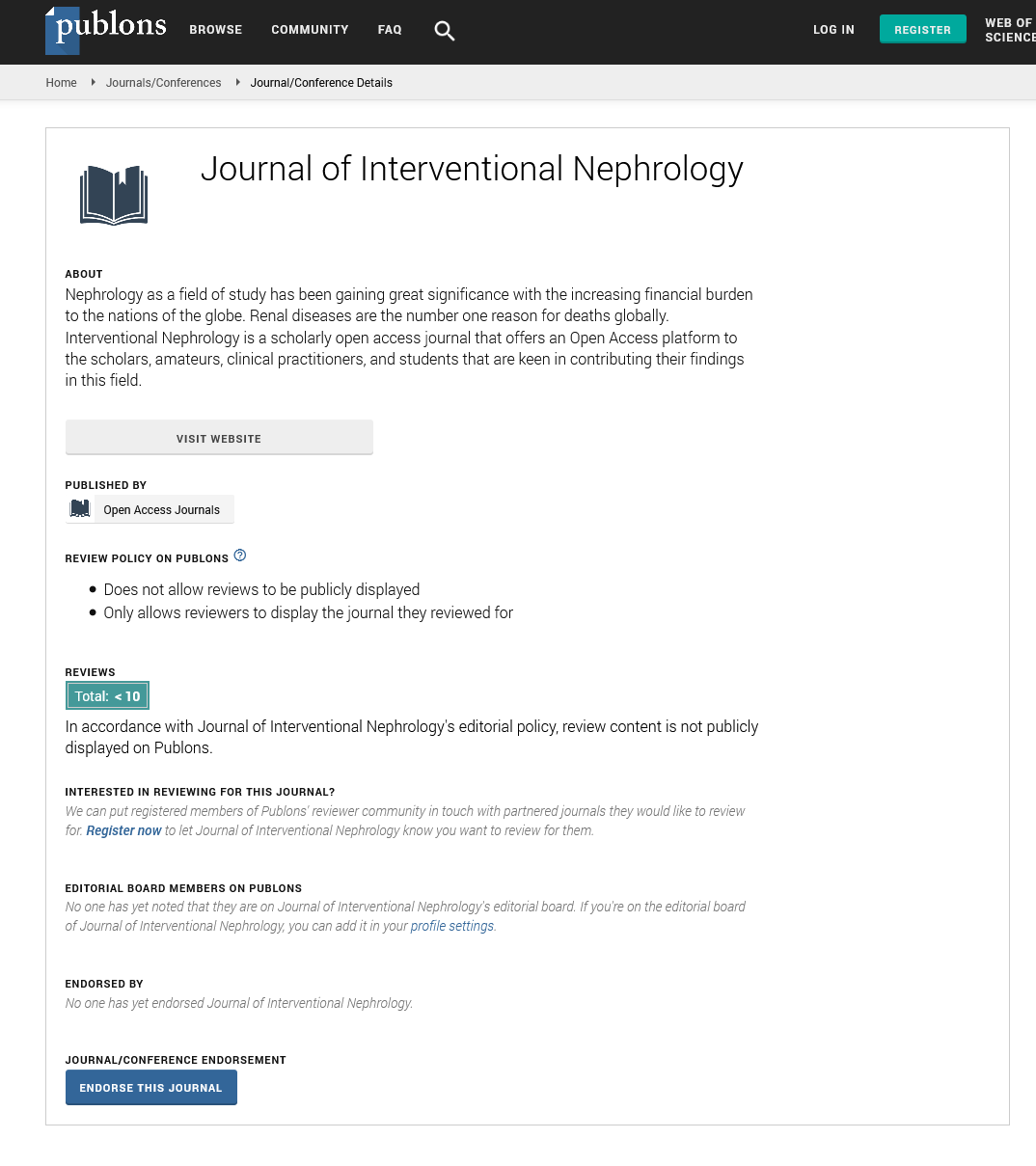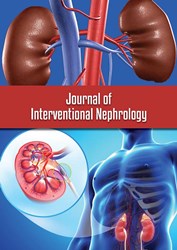Perspective - Journal of Interventional Nephrology (2024) Volume 7, Issue 2
Maintenance Dialysis: Navigating the Lifeline of Renal Care
- Corresponding Author:
- Gang Jager
Department of Nephrology,
University of Tennessee,
Canada
E-mail: Gangjager01fnd@gmail.com
Received: 25-Feb-2024, Manuscript No. OAIN-24-125578; Editor assigned: 28-Feb-2024, PreQC No. OAIN-24-125578 (PQ); Reviewed: 13-Mar-2024, QC No. OAIN-24- 125578; Revised: 20-Mar-2024, Manuscript No. OAIN-24-125578 (R); Published: 29-Mar-2024, DOI: 10.47532/oain.2024.7(2).238-239
Abstract
Chronic Kidney Disease (CKD) is a complex and pervasive health challenge affecting millions worldwide. For individuals in the advanced stages of CKD, maintenance dialysis becomes a crucial lifeline, offering a bridge to improved quality of life. This article delves into the intricate landscape of maintenance dialysis, exploring its types, modalities, impact on patients’ lives, and the continuous advancements shaping the future of renal care.
Keywords
Diabetes ● Hypertension ● Fatigue ● Arteriovenous fistulas ● Hemodialysis
Introduction
Understanding the journey of chronic kidney disease
The silent progression of CKD: (1) Prevalence: CKD silently progresses, often undetected in its early stages. (2) Contributing factors: Diabetes, hypertension, and genetic predispositions play significant roles. (3) Importance of early detection: Timely identification and intervention can slow progression.
Escalating to advanced stages: (1) Stages of CKD: Progressing from mild (Stage 1) to severe (Stage 5) kidney dysfunction. (2) Symptoms and complications: Fatigue, edema, anemia, and mineral imbalances manifest as CKD advances.
Indications for maintenance dialysis: (1) Deteriorating kidney function: When conservative measures are insufficient. (2) Uremic symptoms: Accumulation of waste products necessitates intervention. (3) Fluid and electrolyte imbalance: Critical factors in deciding the initiation of dialysis.
Types of maintenance dialysis
Hemodialysis (HD): (1) Procedure: Blood is circulated outside the body through a dialyzer, removing waste and excess fluids. (2) Frequency: Typically performed three times a week, each session lasting several hours. (3) Vascular access: Arteriovenous fistulas, grafts, or central venous catheters facilitate blood transfer.
Peritoneal Dialysis (PD): (1) Procedure: The peritoneum acts as a natural filter; dialysate is introduced into the abdominal cavity. (2) Types: Continuous Ambulatory Peritoneal Dialysis (CAPD) and Automated Peritoneal Dialysis (APD). (3) Advantages: Home-based, providing more flexibility for patients.
Description
Initiation of maintenance dialysis: A critical decision
Clinical evaluation: (1) Glomerular Filtration Rate (GFR): Key parameter determining kidney function. (2) Uremic symptoms: Assessment of symptoms like fatigue, nausea, and cognitive impairment. (3) Fluid and electrolyte imbalances: Monitoring levels to guide treatment decisions.
Shared decision-making process: (1) Patient education: Understanding the implications, benefits, and potential challenges of maintenance dialysis. (2) Informed consent: Collaboration between healthcare providers and patients in decision-making. (3) Ethical considerations: Weighing the benefits against potential burdens for individual cases.
Timing of initiation: (1) Early vs. late initiation: Balancing the risks and benefits of early versus late initiation of dialysis. (2) Individualized approach: Tailoring decisions to the patient’s overall health, preferences, and goals of care.
Life on maintenance dialysis: Navigating challenges and adaptations
Dialysis access challenges: (1) Vascular access complications: Infections, stenosis, or thrombosis in arteriovenous fistulas or grafts. (2) Catheterrelated issues: Risks of infection and mechanical complications with central venous catheters.
Lifestyle adjustments: (1) Dietary restrictions: Managing fluid intake, limiting phosphorus and potassium, and adjusting protein intake. (2) Medication management: Adherence to prescribed medications for blood pressure, anemia, and bone health. (3) Regular monitoring: Frequent lab tests to ensure dialysis adequacy and address complications.
Emotional and psychological impact: (1) Quality of life considerations: Balancing the demands of dialysis with maintaining a fulfilling life. (2) Depression and anxiety: Addressing the emotional toll of chronic illness and treatment. (3) Support systems: The role of family, friends, and mental health professionals in the patient’s journey. (4) Advancements in maintenance dialysis: Shaping the future of renal care.
Technological innovations: (1) Hemodialysis machines: Improved efficiency, reduced size, and increased portability. (2) Wearable devices: Monitoring fluid status and vital signs for better at-home care.
Immunotherapies and biologics: (1) Anemia management: Erythropoiesis-Stimulating Agents (ESAs) and novel treatments under investigation. (2) Minimizing inflammation: Targeting pathways to reduce chronic inflammation in CKD.
Renal replacement therapies beyond dialysis: (1) Artificial kidneys: Advancements in bioengineering and regenerative medicine. (2) Xenotransplantation: Exploring the potential of pig kidneys to address organ shortages.
Challenges in maintenance dialysis care
Resource disparities: Access to dialysis services: Disparities in availability and affordability, especially in low-income regions. (2) Education and awareness: Bridging gaps in understanding about kidney health and dialysis.
Infection control: (1) Risk of infections: Catheter-related infections, vascular access issues, and the importance of hygiene. (2) Preventive strategies: Education on infection prevention and the role of vaccination.
Financial strain: (1) Cost of treatment: Economic burdens for patients, especially in countries without comprehensive healthcare coverage. (2) Workplace challenges: Balancing employment with the demands of regular dialysis sessions.
Patient advocacy and empowerment
Advocacy for patient rights: (1) Access to information: Ensuring patients are well-informed about their condition and treatment options. (2) Shared decision-making: Encouraging patients to actively participate in their care plans.
Support networks: (1) Patient support groups: Platforms for sharing experiences, advice, and emotional support. (2) Community outreach: Raising awareness about kidney health and the importance of early detection.
Policy and healthcare system advocacy: (1) Equitable access: Advocating for policies that ensure all individuals, regardless of socioeconomic status, have access to quality renal care. (2) Research funding: Encouraging investment in research for innovative treatments and preventive measures.
Conclusion
Maintenance dialysis represents both a medical intervention and a lifestyle adaptation for individuals navigating the complexities of advanced CKD. As we delve into the advancements, challenges, and the human experience of life on maintenance dialysis, it becomes evident that a comprehensive and patient-centered approach is essential. From the initiation decision to daily life adjustments, and the continuous pursuit of innovation, the landscape of maintenance dialysis is a dynamic realm where resilience, support, and advocacy converge to shape.


